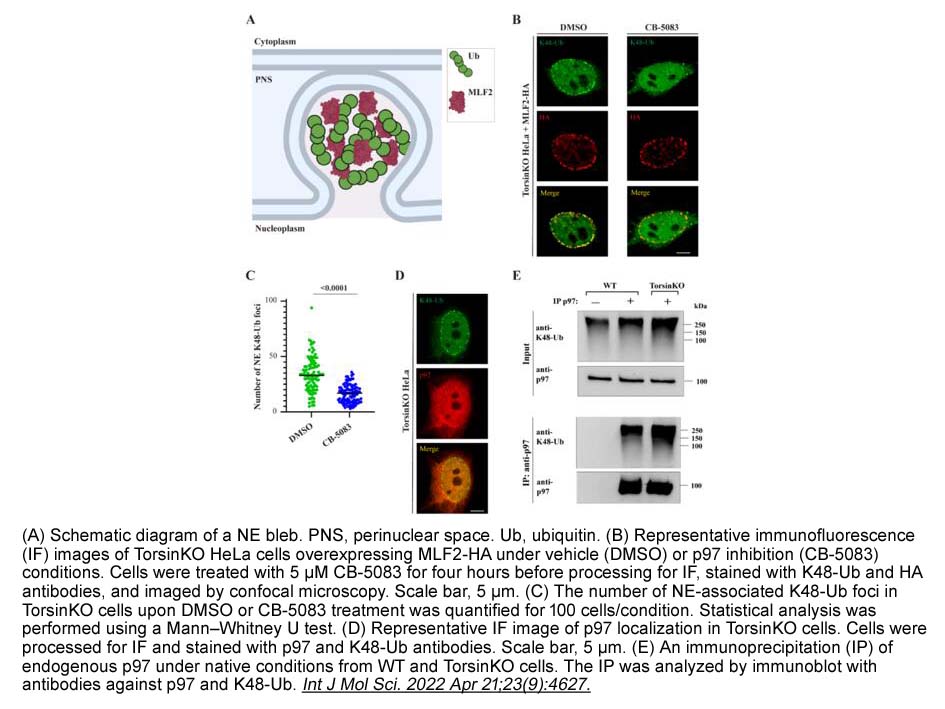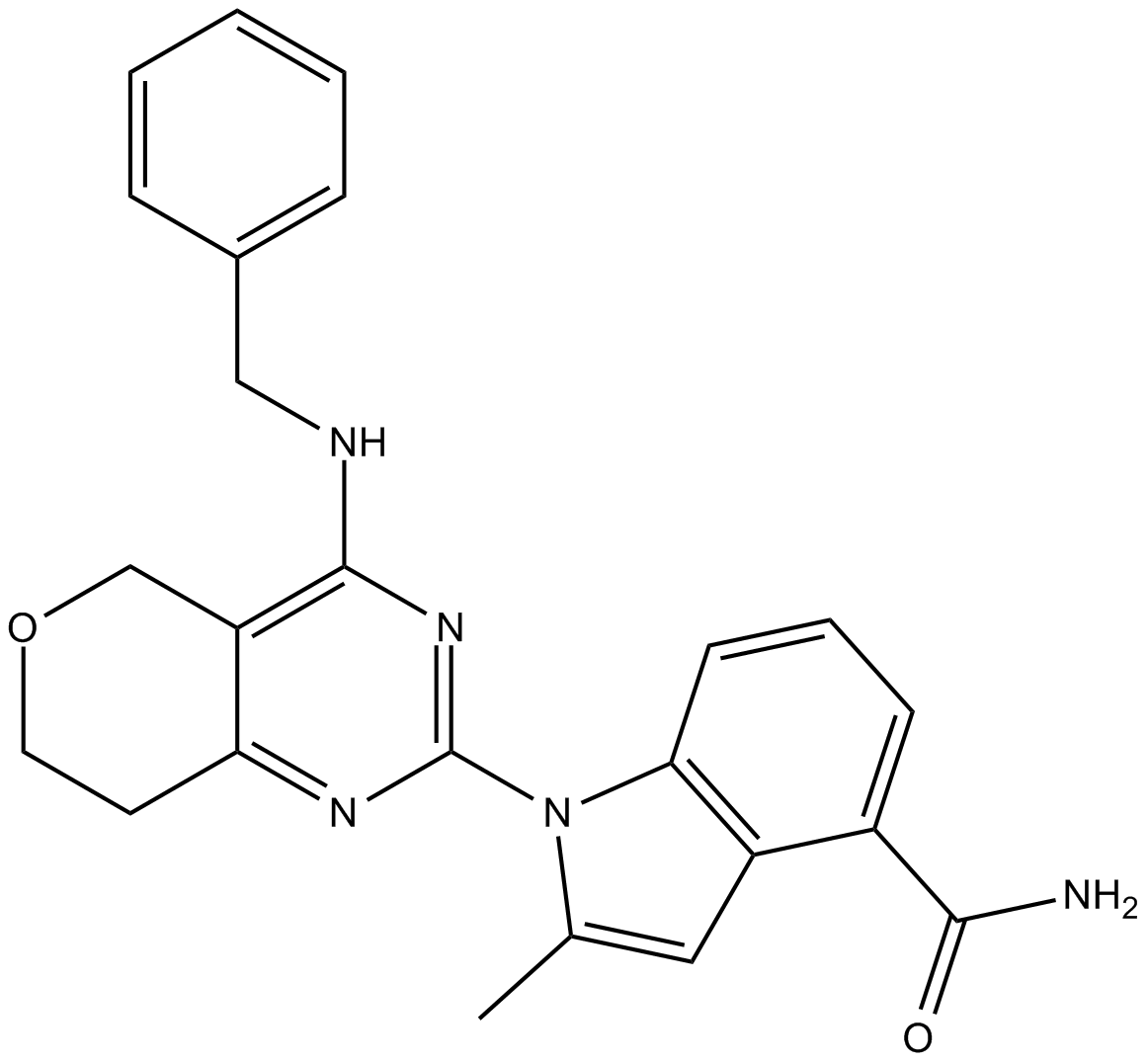CB-5083
IC50: 15.4 nM
CB-5083 is an orally bioavailable inhibitor of p97. P97 is an AAA-ATPase involved in multiple cellular functions such as organelle membrane homotypic fusion and sorting of endosomal cargo. P97 is also known as valosin-containing protein which plays important roles in regulating protein homeostasis [1].
In vitro: CB-5083 is a selective potent inhibitor of p97’s second ATPase domain. CB-5083 might compete with ATP for the same binding site but may adopt a different orientation[2]. The IC50 of CB-5083 against wild-type (WT) p97 was 15.4 nM. CB-5083 could dose-dependently increase the cytosolic protein degradation in HEK293T, A549 and HCT116 cell lines [1]. CB-5083 treatment (2.5 μM) of A549 cells for 24h could induce cancer cell death [1].
In vivo: In female nude mice bearing HCT116, A549 lung carcinoma, and AMO-1 multiple myeloma xenograft tumors, oral administration of CB-5083 (100 mg/kg) for 6 h showed a significant antitumor response in tumors (TGI = 63%, p < 0.0001) [1,2].
Clinical trial: CB-5083 has entered phase 1 clinical trials in patients with multiple myeloma and solid tumors.
References:
Anderson D J, Le Moigne R, Djakovic S, et al. Targeting the AAA ATPase p97 as an Approach to Treat Cancer through Disruption of Protein Homeostasis[J]. Cancer cell, 2015, 28(5): 653-665.
Zhou H J, Wang J, Yao B, et al. Discovery of a First-in-Class, Potent, Selective, and Orally Bioavailable Inhibitor of the p97 AAA ATPase (CB-5083)[J]. Journal of medicinal chemistry, 2015, 58(24): 9480-9497.
- 1. Yu Chen, Zhixi Chen, et al. "A cGAS-mediated mechanism in naked mole-rats potentiates DNA repair and delays aging." Science. 2025 Oct 9;390(6769):eadp5056 PMID: 41066557
- 2. Marius K. Lemberg, et al. "RHBDL4-triggered downregulation of COPII adaptor protein TMED7 suppresses TLR4-mediated inflammatory signaling." Nat Commun. 2024 Mar 7;15(1):1528 PMID: 38453906
- 3. Jake W Carrasquillo Rodríguez, Onyedikachi Uche, et al. "Differential reliance of CTD-nuclear envelope phosphatase 1 on its regulatory subunit in ER lipid synthesis and storage." bioRxiv. 2023 Oct 13:2023.10.12.562096 PMID: 37873275
- 4. Xiaohan Zhang, Crystal Young, et al. "Perturbation of endoplasmic reticulum proteostasis triggers tissue injury in the thyroid gland." JCI Insight. 2023 Jun 22;8(12):e169937 PMID: 37345654
- 5. Andrea Zanotti, et al. "Characterisation of the human signal peptidase complex as a quality control enzyme for membrane proteins." Heidelberg Ruprecht Karls University. 28 Jun 2023
- 6. Josephine Bock, Nathalie K€uhnle, et al. "Rhomboid protease RHBDL4 promotes retrotranslocation of aggregation-prone proteins for degradation." Cell Rep. 2022 Aug 9;40(6):111175 PMID: 35947953
- 7. Sarah M. Prophet, Brigitte S. Naughton, et al. "p97/UBXD1 Generate Ubiquitylated Proteins That Are Sequestered into Nuclear Envelope Herniations in Torsin-Deficient Cells." Int J Mol Sci. 2022 Apr 21;23(9):4627 PMID: 35563018
- 8. Chi-Wei Yeh, Wei-Chieh Huang, et al. "The C-degron pathway eliminates mislocalized proteins and products of deubiquitinating enzymes." EMBO J. 2021 Apr 1;40(7):e105846 PMID: 33469951
- 9. Zhang H, Read C, et al. "The Human Cytomegalovirus Nonstructural Glycoprotein UL148 Reorganizes the Endoplasmic Reticulum." mBio. 2019 Dec 10;10(6). pii: e02110-19 PMID: 31822584
- 10. Nathalie Kühnle, Josephine Bock, et al. "Intramembrane protease RHBDL4 interacts with erlin complex to target unstable soluble proteins for degradation." bioRxiv. 2019 November 20
| Physical Appearance | A solid |
| Storage | Store at -20°C |
| M.Wt | 413.47 |
| Cas No. | 1542705-92-9 |
| Formula | C24H23N5O2 |
| Solubility | insoluble in H2O; ≥20.65 mg/mL in DMSO; ≥4.4 mg/mL in EtOH |
| Chemical Name | 1-(4-(benzylamino)-7,8-dihydro-5H-pyrano[4,3-d]pyrimidin-2-yl)-2-methyl-1H-indole-4-carboxamide |
| SDF | Download SDF |
| Canonical SMILES | Cc([n](c1ccc2)-c3nc(NCc4ccccc4)c(COCC4)c4n3)cc1c2C(N)=O |
| Shipping Condition | Small Molecules with Blue Ice, Modified Nucleotides with Dry Ice. |
| General tips | We do not recommend long-term storage for the solution, please use it up soon. |
| Kinase experiment [1]: | |
|
Binding assays |
CB-5083 IC50 analyses for p97 and mutants were conducted utilizing a standard NADH-based coupled kinetic ATPase assay. The assay was conducted in 384 well plates in 50 μl volume with 60 nM p97 enzyme, 500 μM ATP, 3 units/ml each of pyruvate kinase and lactate-dehydrogenase, 250 μM NADH and 3.75 mM phosphoenolpyruvate. ATP hydrolysis dependent NADH reduction was measured at 340 nM wavelength after 2 hours incubation at 37 °C. ATP competition with CB-5083 was measured in the NADH assay with increasing concentrations of ATP. For the ADP-glo assay, compounds were diluted in DMSO with a three-fold ten-point serial dilution to achieve assay concentrations ranging from 10 μM to 0.16 nM. The assay was performed by incubating 20 nM p97, 20 μM ATP and serial diluted compounds in 5 μl volume at 37 °C for 15 min. ADP glo reagents 1 and 2 were added. The IC50 of each compound was derived by reading luminescence values and fitting the values to a 4 point sigmoidal curve. |
| Cell experiment [1]: | |
|
Cell lines |
HEK293T stably expressing TCRα-GFP, A549 and HCT116 cell lines |
|
Preparation method |
The solubility of this compound in DMSO is >20.7mg/mL. General tips for obtaining a higher concentration: Please warm the tube at 37 ℃ for 10 minutes and/or shake it in the ultrasonic bath for a while. Stock solution can be stored below -20℃ for several months. |
|
Reacting condition |
2.5 μM, 6 hr; |
|
Applications |
In human embryonic kidney 293T cells stably expressing TCRα-GFP, CB-5083 treatment led to a dose-dependent accumulation of TCRα-GFP in the ER with EC50 of 0.73 ± 0.04 μM. In the lung carcinoma cell line A549, CB-5083 led to accumulation of poly-ubiquitinated proteins. In HCT116 cells, CB-5083 treatment resulted in accumulation of K48-ubiquitinated proteins at a higher molecular weight. |
| Animal experiment [2]: | |
|
Animal models |
Nude or SCID-Beige mice xenografted with HCT116 derived from colorectal adenocarcinoma, NCI-H1838 derived from non-small-cell lung cancer, AMO-1 derived from a plasmacytoma, and colorectal cancer patient-derived xenograft (PDX) models |
|
Dosage form |
oral administration, 25 and 100 mg/kg, 6 hr. oral gavage once (qd) or twice (bid) daily or following a 4 days on, 3 days off (qd4/3off) cycle. |
|
Application |
CB-5083 (oral, 25 and 100 mg/kg) induced the UPR and apoptosis. Oral treatment with CB-5083 inhibited the growth of human tumor xenografts in mice. |
|
Other notes |
Please test the solubility of all compounds indoor, and the actual solubility may slightly differ with the theoretical value. This is caused by an experimental system error and it is normal. |
|
References: [1]. Anderson D J, Le Moigne R, Djakovic S, et al. Targeting the AAA ATPase p97 as an approach to treat cancer through disruption of protein homeostasis[J]. Cancer Cell, 2015, 28(5): 653-665. |
|
Quality Control & MSDS
- View current batch:
Chemical structure
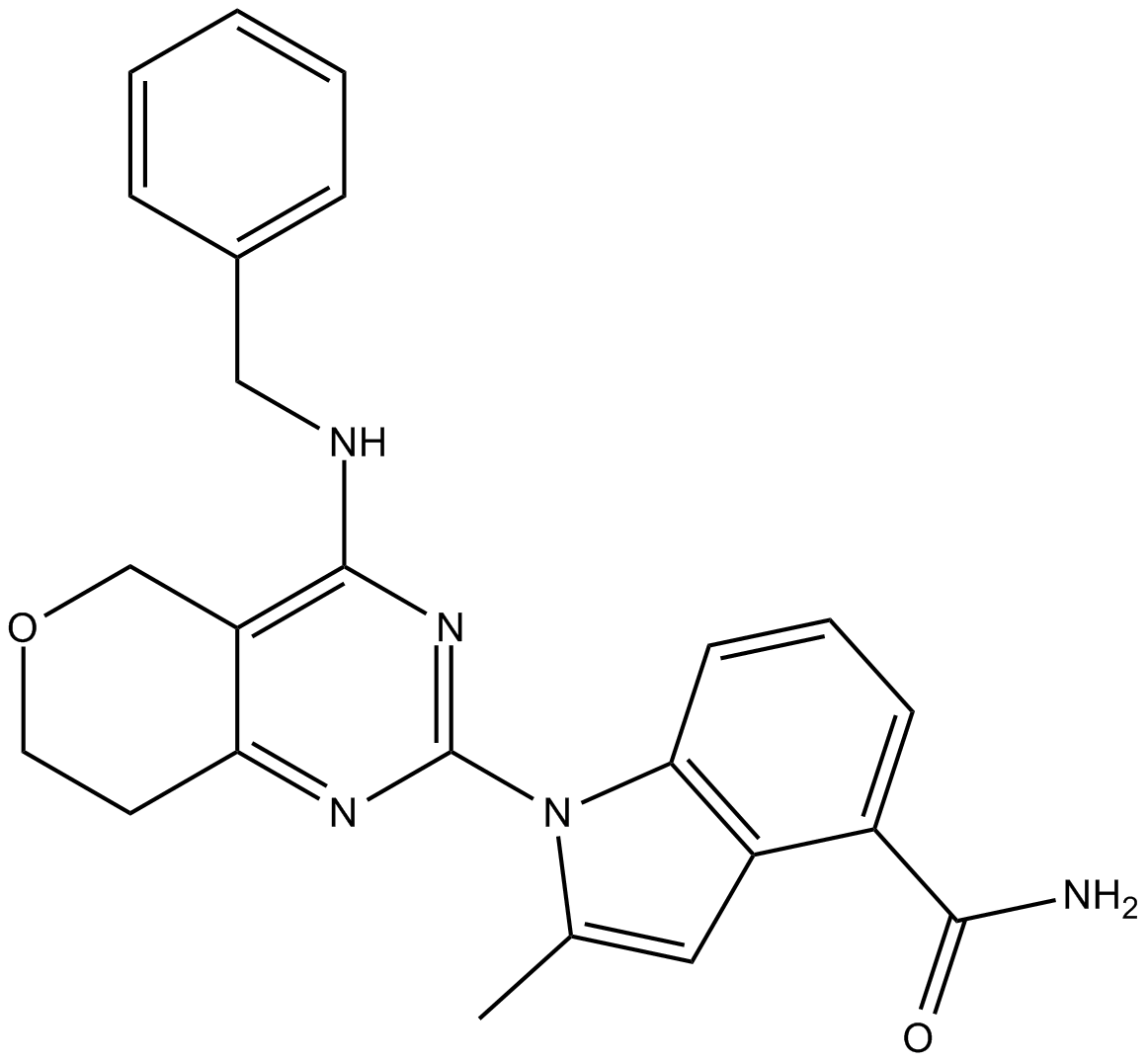
Related Biological Data
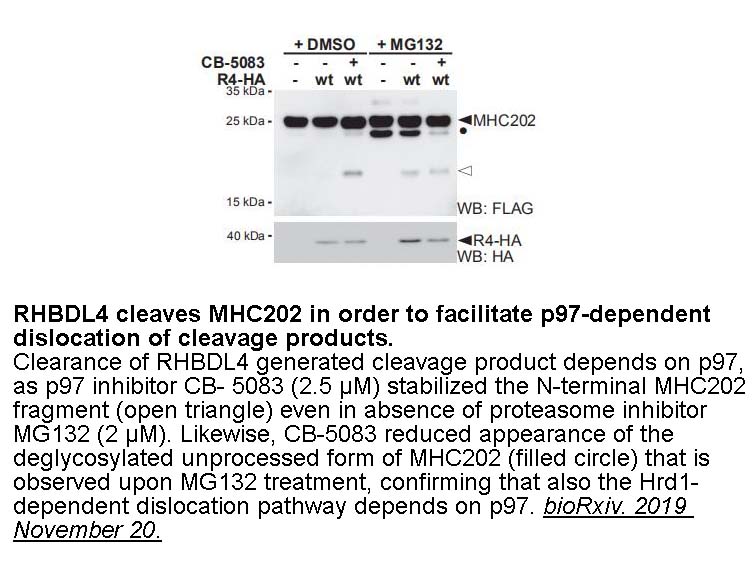
Related Biological Data
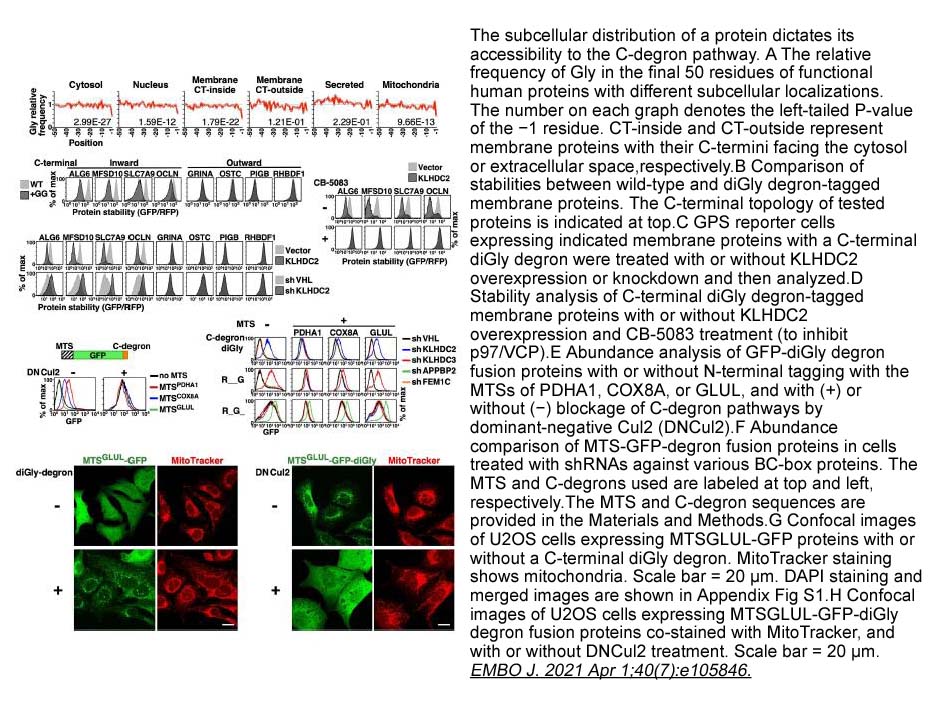
Related Biological Data
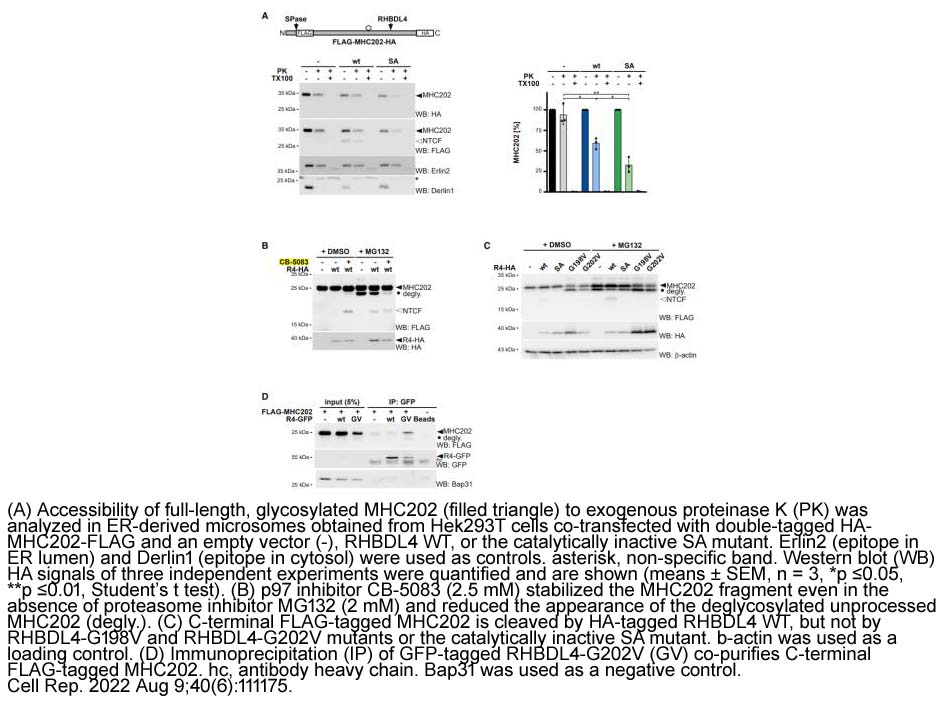
Related Biological Data
